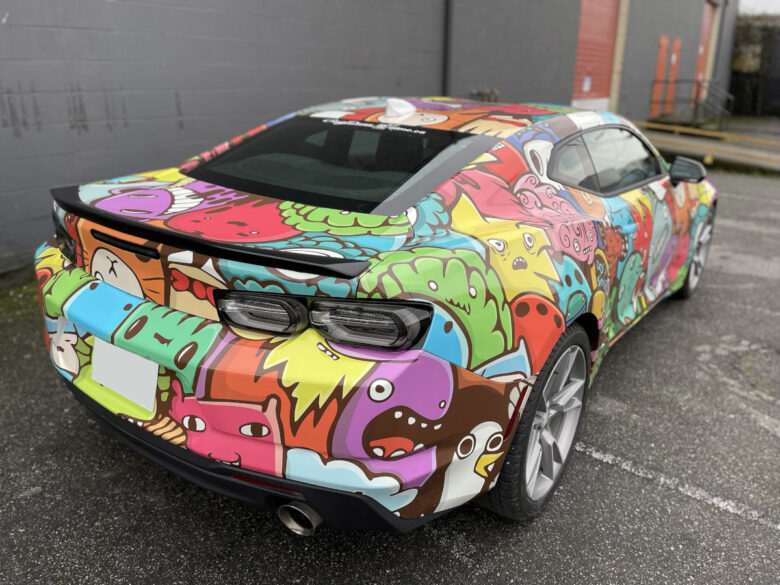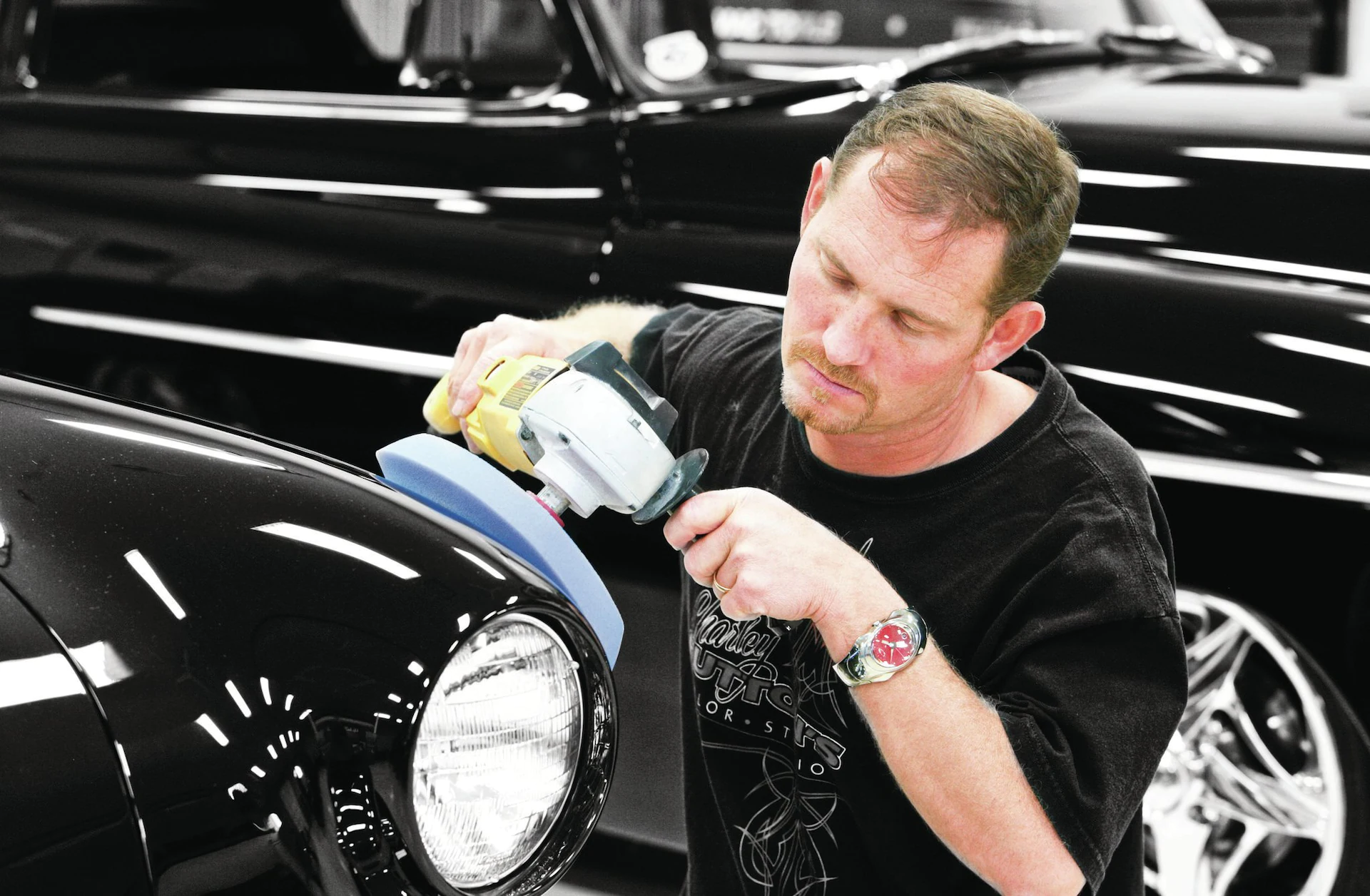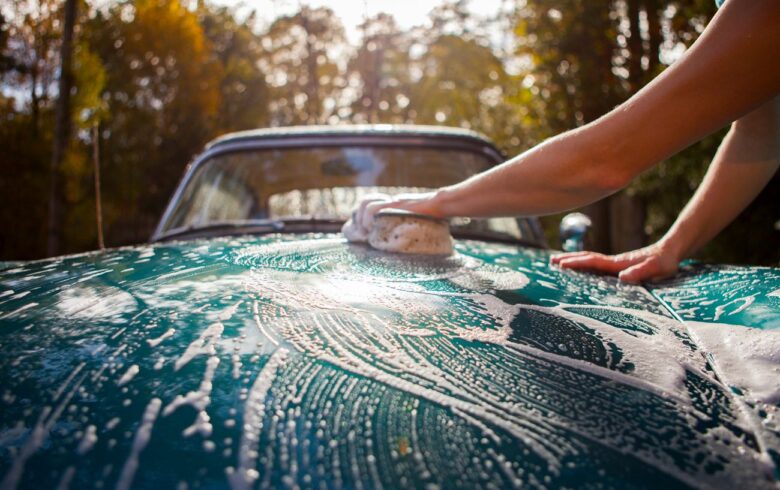If you are looking for a way to make your car stand out from the crowd, a new paint job can be just the ticket. But there is another possibility that more and more people are turning to today: car wraps. Car wraps offer an alternative look while protecting your vehicle’s original paint job, but what do they offer that traditional painting does not? In this blog post, we take a deep dive into two ways of changing up how your car looks—car wraps versus painting—and explore their relative pros and cons so you can decide which is right for your ride.
Contents
Introducing Car Wraps and Paint – What is the Difference Between Them
When it comes to customizing your car’s appearance, there are a few options to consider, car wraps and paint being the most popular. Car wraps are vinyl coverings that can be applied to the exterior of your vehicle, providing a myriad of options for colors, designs, and finishes. These wraps use adhesive technology that ensures that the car’s original paint remains untouched, making them an excellent option for those who want to switch up their car’s look without committing to a permanent change. Paint, on the other hand, involves applying a new layer of color to the car’s exterior. While it may provide a more traditional look, it can be harder to modify, more time-consuming, and more expensive. Both car wraps and paint have their unique benefits and drawbacks, so it is essential to choose the option that best suits your needs and preferences.
Pros & Cons of Car Wraps

Source: wrapnride.ca
Car wraps are a popular way to customize your vehicle’s appearance but, as with most things in life, they come with their pros and cons. On the positive side, car wraps offer a cost-effective way to change the look of your vehicle without having to repaint it. They also act as a protective layer, shielding your car’s paint from scratches and other types of damage caused by environmental factors like bird droppings and tree sap. On the flip side, car wraps require a lot of preparation and installation time, and they can be difficult to remove once they have been installed. Additionally, some car owners may find that the wrap is not as durable as they expected, leading to issues like fading and peeling over time. Overall, car wraps offer a unique and creative way to stand out on the road, but it’s important to weigh the pros and cons to determine if they’re the right fit for you and your vehicle.
1. Cost Efficiency
Cost efficiency is a term that is often thrown around in business circles. Essentially, it refers to the ability of an organization to maximize profits while minimizing expenses. This involves finding ways to streamline operations, reduce waste, and maximize the value of resources used. Ultimately, cost efficiency is about finding ways to do more with less. It is an ongoing process that requires constant evaluation and adjustment, but it can have a significant impact on a company’s bottom line. By prioritizing cost efficiency, businesses can increase their profitability and stay competitive in a constantly changing market.
2. Durability
When it comes to durability, it is important to look beyond the surface level of a product. Factors like materials and construction play crucial roles in determining how long an item will last. For example, a toy made of cheap plastic may not withstand the wear and tear of daily playtime, whereas a toy made with high-quality materials could last for years. In addition, environmental factors like moisture and temperature can affect durability over time. By considering all of these factors, you can make more informed decisions when it comes to purchasing durable, long-lasting products.
3. Design Flexibility
Design flexibility is a key consideration for any project that wants to succeed. It refers to the ability of a design to be adapted to changing requirements, stakeholder feedback, and industry standards. A flexible design adds value to a project as it can accommodate changes as the need arises without having to start from scratch. It also facilitates innovation and experimentation. With design flexibility in mind, designers can stretch their creativity to come up with new ideas and approaches that can make the design stand out. By embracing the principles of design flexibility, projects can stay ahead of the competition and deliver products that meet evolving customer needs and preferences.
Pros & Cons of Paint

Source: motortrend.com
Paint is a versatile material that can breathe new life into a dull room or drab piece of furniture. However, like any material, it comes with its own set of advantages and disadvantages. One clear pro of paint is the transformative power it has. A fresh coat of paint can update the look of a room, add visual interest, and increase the value of a home. It’s also relatively affordable, making it an accessible DIY project. On the other hand, paint can also be messy and time-consuming, with several coats required to get good coverage. It can also emit fumes that are harmful to breathe in. Consider these pros and cons carefully before deciding to take on a painting project.
1. Customization Options
In a world where we all strive for uniqueness and individuality, why should our technology be any different? Customization options have become increasingly popular in recent years, allowing users to personalize their devices to fit their unique needs and preferences. Whether it’s changing the color scheme, font size, or layout, customization options allow users to tailor their technology to fit their personal style. These options not only make devices more visually appealing, but they can also improve accessibility and functionality for individuals with different needs. From the language code to the interface design, customization options give users the power to make technology their own.
2. Quality Finish
When it comes to achieving a high-quality finish, every detail counts. From the choice of materials to the application techniques used, each step in the process can have a significant impact on the final result. A quality finish not only looks great but also adds value and longevity to a product. Achieving a quality finish requires expertise and attention to detail, from choosing the right tools and materials to ensuring proper preparation and application. Whether it’s a furniture maker creating a flawless surface on a custom-designed piece or a vehicle manufacturer ensuring a mirror-like shine on the latest model, achieving a quality finish is essential for any project.
Making Your Decision – Weighing the Pros and Cons
When it comes to making decisions, it can be tough to weigh the options and decide what to do. One method that many people find helpful is weighing the pros and cons of each option. By taking some time to think about the potential benefits and drawbacks of each choice, you can start to get a clearer picture of what makes the most sense for you. Keep in mind that there is no “right” decision – ultimately, it comes down to what feels right for you and your situation. Taking a careful, thoughtful approach to decision-making can help you feel more confident and empowered in your choices.
How to Maintain Your Vehicle After the Installation Process Is Complete

Source: simplegreen.com
Keeping your vehicle in good condition after installing new parts is an important aspect of being a responsible car owner. Regular maintenance will ensure that your investment continues to perform at its best and lasts for years to come. Start by checking your oil levels, and topping up if necessary, to ensure your engine is running smoothly. Move on to checking your tire pressure and alignment, which can affect your vehicle’s handling and fuel efficiency. Regularly washing and waxing your car can help prevent rust and keep its exterior looking great. Don’t forget about your brakes and suspension system, which require periodic inspections to ensure optimal performance. By following these simple tips, you can keep your vehicle in top shape and prolong its lifespan.
In Closing – Get Creative With Your Vehicle Design!
As we come to a close, it’s important to remember that vehicle design doesn’t have to be restricted to the norm. The automotive industry is evolving at an incredible pace and it’s time to get creative! Experiment with bold colors, unique body shapes, and even futuristic designs that push the limits of what we’ve seen on the market before. With advancements in technology and engineering, there’s never been a better time for designers to explore fresh and innovative concepts. It’s time to break free from tradition and take your vehicle designs to the next level.
In conclusion, there are several factors to consider when it comes to deciding between installing a car wrap or painting your vehicle. Car wraps are more cost-efficient and offer a lot of design flexibility while paints provide a quality finish and plenty of customization options. Furthermore, both require regular maintenance in order to keep that vibrant look for longer. Once you weigh the pros and cons for yourself, you can easily decide which route is best suited for your needs. So, start being creative with your vehicle’s design and make the most out of it! Whether you choose car wraps or paint, we guarantee that you won’t regret taking this step as either option will add to your vehicle’s appearance and elevate its style. Just keep in mind that making sure it remains well-maintained is just as important as making the initial decision between car wraps or paint. Lastly, don’t forget to enjoy the process of customizing your ride as it is bound to be a fun-filled experience!
